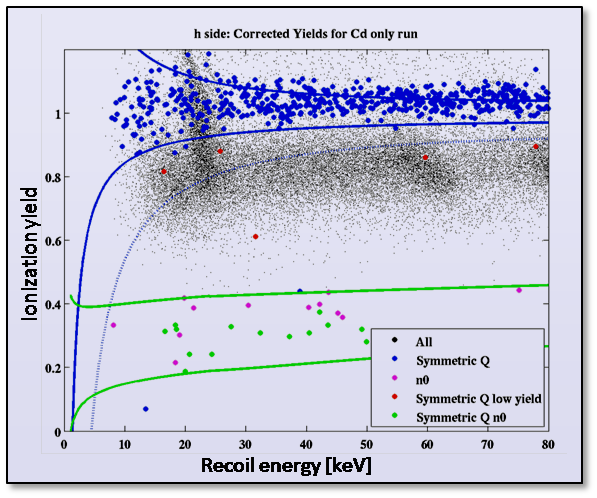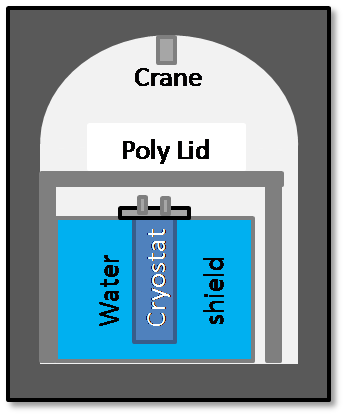Motivation
|
SuperCDMS plans to install a 100-200 kg experiment at SNOLAB. When going to a large detector mass we need at the same time to reduce the primary background rate and improve the discrimination capability of our detectorsbetween background and potential WIMP events. One step in this direction is the a new detector design. A prototype detector with this design shows an excellent discrimination. However, we are not able to quantify the discrimination power, since the measurements done at a testing facility at the surface are subject to neutron background (see Fig. 1). In order to qualify any new detector design for a large scale experiment as planned for SNOLAB (order of 100-200 kg) we need a way to measure the actual discrimination power, which is only possible in a well shielded testing facility. Another problem appears when we go to larger individual detector modules: the event rate from environmental radiation in a testing facility at the surfaces will become too large, resulting in constant pile-up, so that it becomes impossible to operate the detector. We could still measure operational parameters of the detectors, but not test the actual performance as particle detector. This will already be an important issue if we go from our present detector modules with a size of 3" × 1" (≅ 620 g) to the next generation with 100 mm × 33 mm (≅ 1.4 kg), and even more so once we further increase the detector volume to 6" × 2" as under discussion for a future ton-scale phase of the experiment. To avoid pile-up and be able to operate the detector we again need a shielded testing facility. |  |
 Figure 1:Ionization yield vs. Recoil energy for the prototype detector. WIMP events would lay between the two green lines (nuclear recoil band or signal region). The events above are artificialy induced surface events. Most of the events inside the nuclear recoil band are likely from neutrons, but we have no means of discriminating event by event between real neutron events and surface events leaking into the nuclear recoil band. So we cannot determine how likely it is that a surface event shows up in the signal region, unless we have a testing facility which is well shielded from neutrons. |

